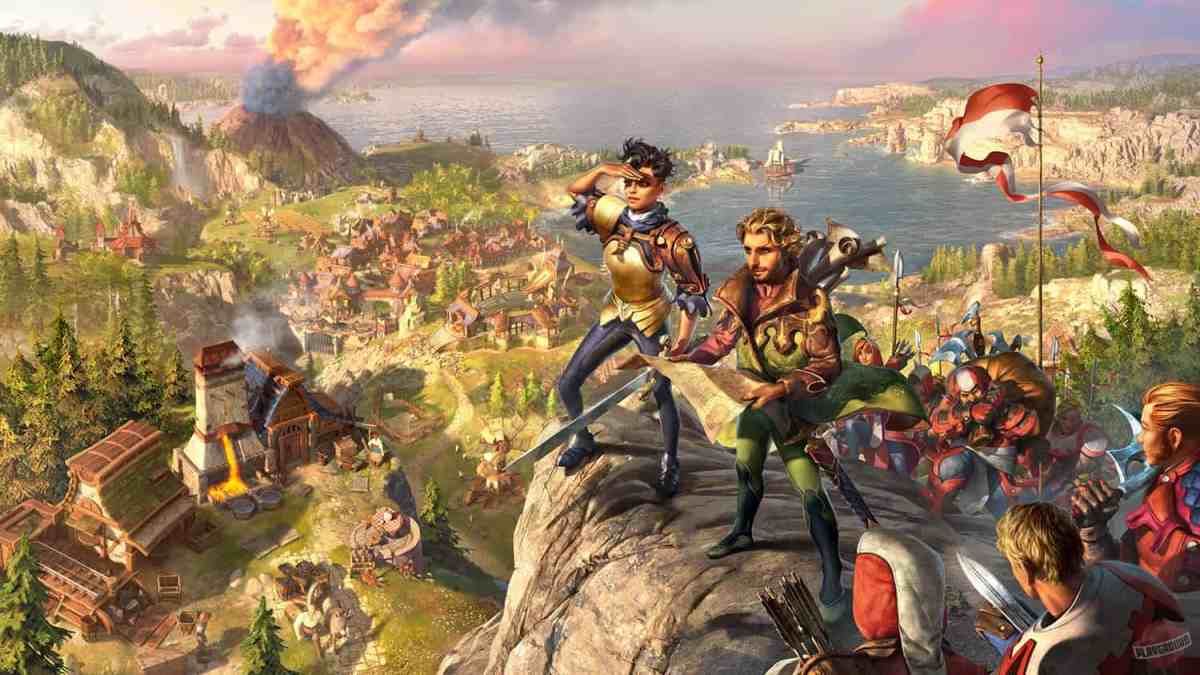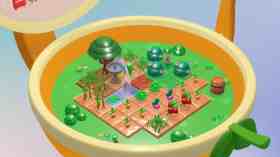The Settlers: New Allies is beautiful. On each game map, lands stretch far into the distance, with clouds opening to reveal rushing streams, mountainous ruins, grassy plains, and idyllic, sandy beaches. Wandering further with Engineers and army folk in tow reveals yet more wonderful sights – but equally, the threat of ruin, as a surprisingly blistering game pace defines life in your newly-settled colony, and the rigours of every gameplay round. This is The Settlers in unfamiliar territory.
Where previous games in the long-running franchise focussed on the act of settling itself – establishing economies, training citizens, exploiting the natural landscape – New Allies skews the tone of these city-builders, setting players on a variety of maps, and tasking them with building rigorous defences and a solid army before even thinking about economy, or food, or the basics of human necessity.
New Allies is both simpler and more complex than its predecessors. Gone is the need to account for food and a thriving, money-powered economy. In its place arrives the necessity of iron and coal, which can be found in underground deposits littered around the map. These resources are used directly to initiate regular townsfolk into the army, and allow each civilisation to build up their strength and power. However, your overt reliance on these resources provides a brand new challenge.
Read: Ubisoft explains why several of its upcoming games were cancelled
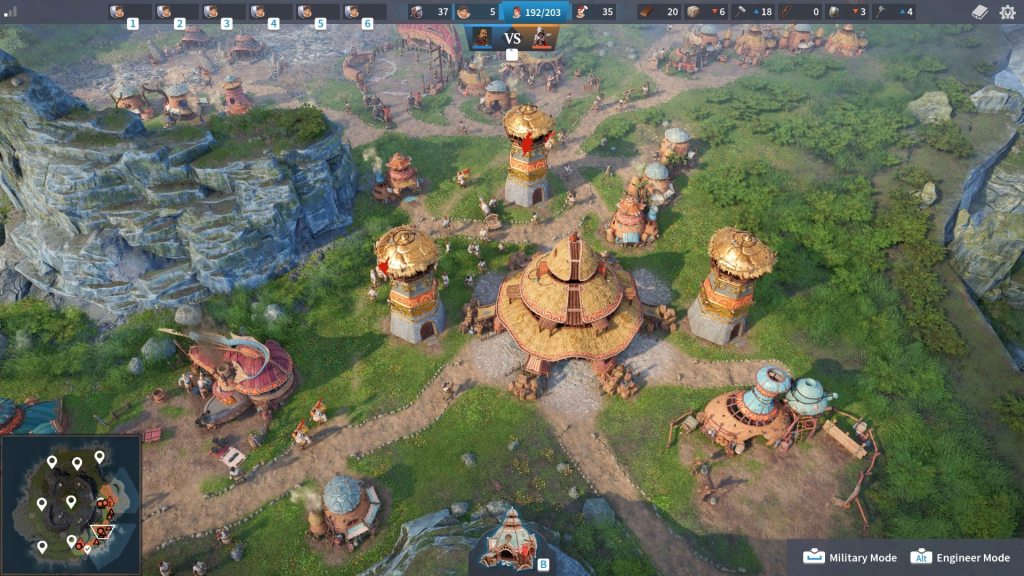
The Settlers: New Allies is segmented into multiple game modes: a massive campaign charting 10+ hours of gameplay, and several Skirmish modes that pit players against online competitors, or an AI opponent. No matter which you choose, you’re diving in with the same basic idea; you are a ruler looking to expand your civilisation, create a thriving town, and protect your citizens as threats grow on all sides.
Skirmish Mode, which allows ‘free play’ city building, is technically the main mode of The Settlers: New Allies. Playing a match, you’ll generally start from scratch with an Elari, Maru, or Jorn settlement – differentiated only by their stylish buildings, unique warriors, and colours. With your new townsfolk, you’ll first establish resource-gathering hubs – a sawmill, a logging camp, a quarry.
These establishments provide a unique resource, which is fed back into other buildings, and transformed from each-to-each, ultimately becoming an army tool: a warrior, arbalist, javelin-thrower, berserker, or another such fighter. The ultimate goal, rather than to actually settle, is to build an army by completing busywork through buildings, and connecting your township with a variety of roads.
You establish a logging camp to generate wood. This is given to the sawmill, to create planks. Planks are used to create lodgings and other buildings. Other townsfolk mine rocks. If there’s a nearby mining space, they might be lucky enough to gather coal, iron, gold, and gems. These all contribute to the establishment of unique buildings, as long as you have your refinement processes set up. Planks feed into buildings, rocks establish warehouses and training grounds, and these eventually feed into the refinement process for your army, via a long chain of city-building processes.
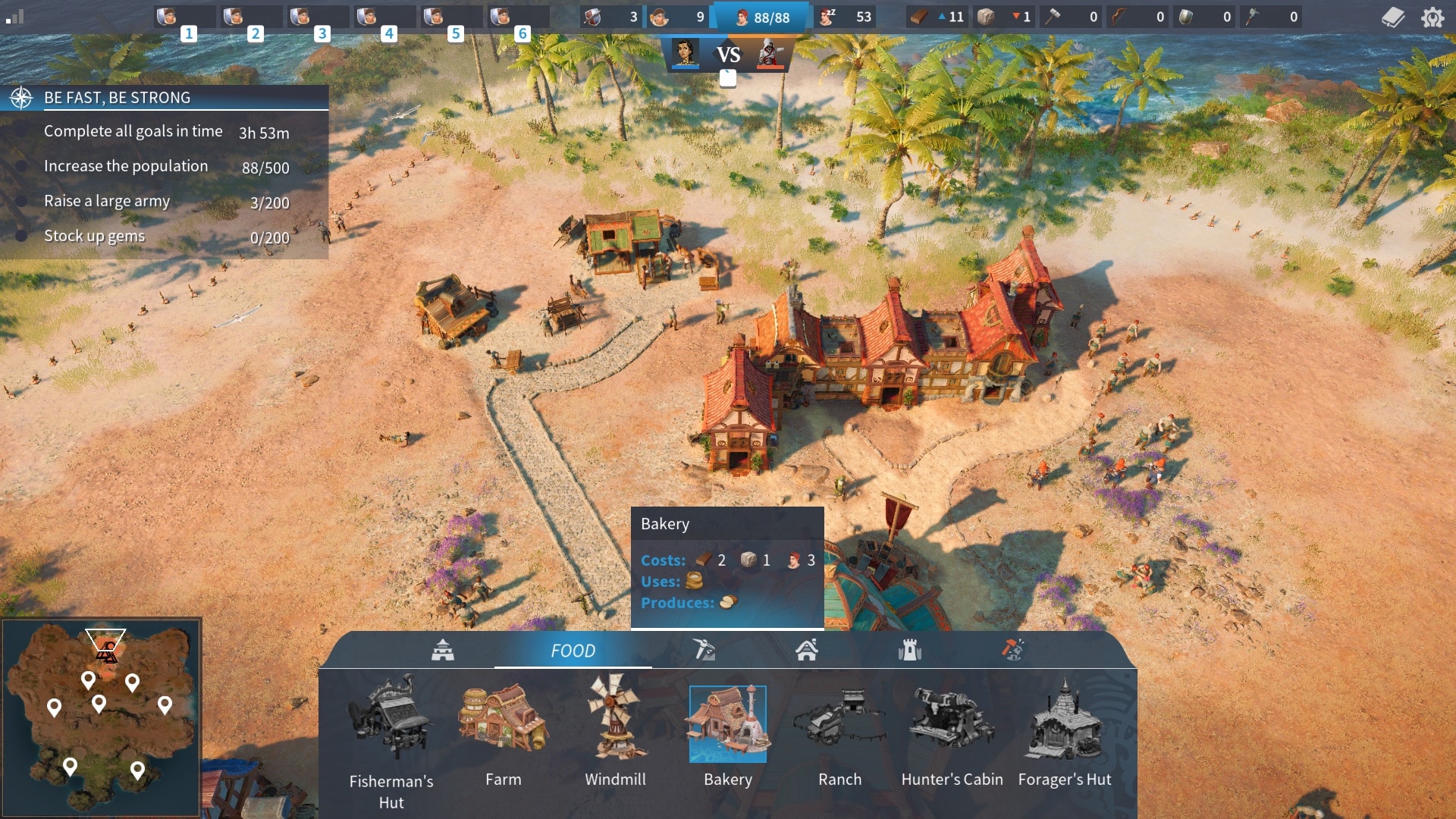
The real challenge lies in gathering every resource you need – and to that end, The Settlers: New Allies is not always generous. In each Skirmish, you’re placed randomly on a map. Sometimes, you’re placed on a map with a nearby ocean. This gives you easy access to building a Harbour, a structure that can be used to buy and sell resources, as needed.
Sometimes you’re so far from water that any attempt to build a Harbour is immediately squashed by roving enemy troops, who can instantly defeat your Engineers if they’re roaming unprotected across unclaimed land. That’s another part of the challenge of New Allies – you must claim land before you build on it. That requires sending Engineers out to push your boundaries forward, but immediately puts them in danger, thanks to aggressive enemy AI that can’t be adjusted for difficulty (there is currently only one, standard difficulty in the game – and it’s very mean).
In one randomly-generated Skirmish, I was put far away from any mining deposits – and therefore couldn’t easily nab iron and coal to build out my army. Any time I ventured forward, I was immediately killed by my well-advanced opponent who clearly did have access to this resource, ending my ambitions early.
While the randomness made for an excitingly hellish adventure – one that I relished, and attempted to overcome multiple times – it did also dampen my overall enthusiasm for that particular Skirmish. With such a strong reliance on resources, being cut off from them so easily – by distance, of all things – felt cheap. I was luckier in later Skirmishes that did allow me close contact with the much-needed iron and coal veins.
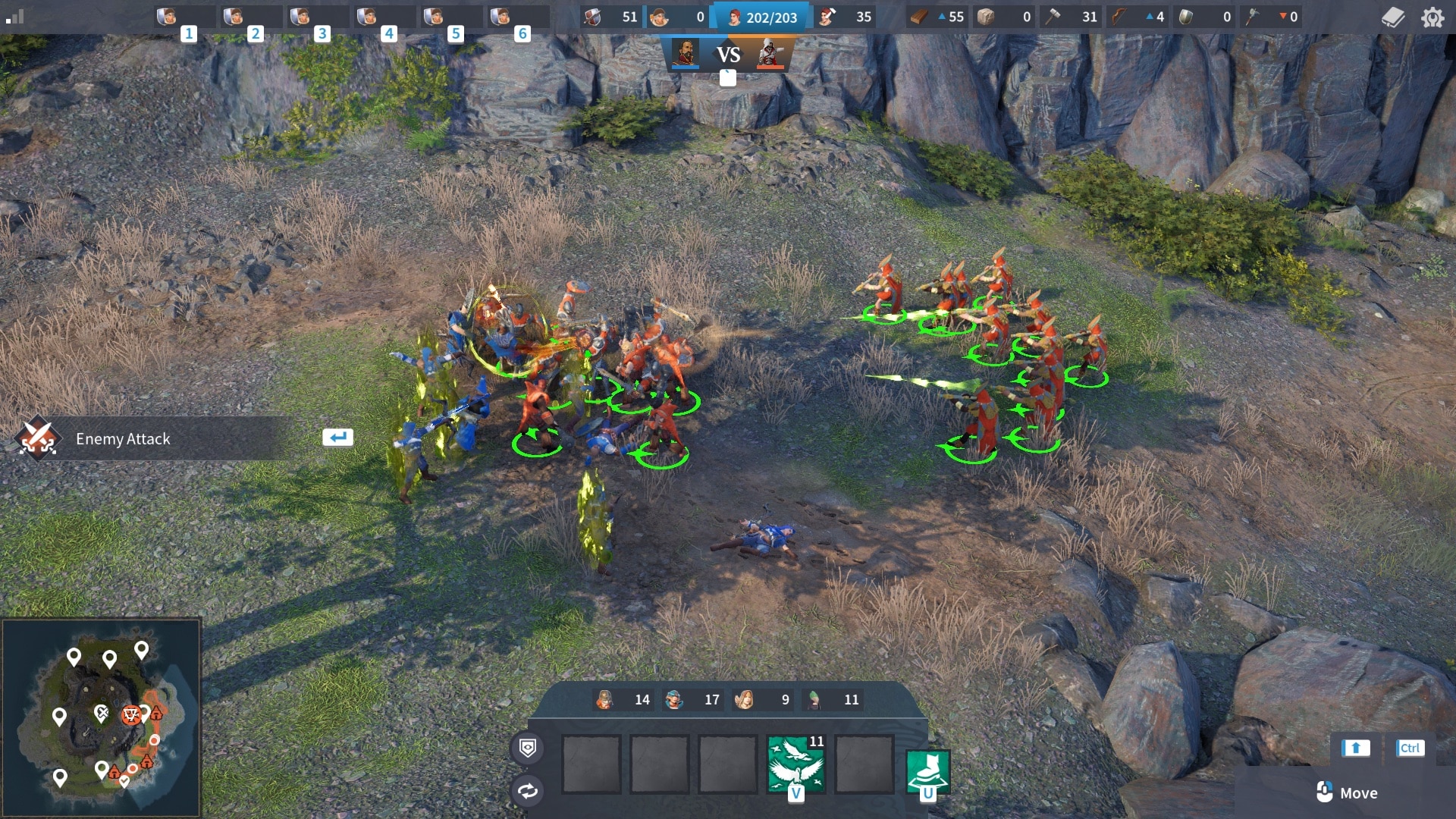
When flow is possible, due to intangible and unchangeable game circumstances, The Settlers: New Allies can be an incredibly rewarding experience. Seeing your army flourish and grow as you place each building into a productive chain, and watching as your flock advances, is euphoric – thanks, in part, to the veritable mountain you must climb to protect your town, and allow it to grow.
The intricacies of this flow take a considerable amount of understanding – spelled out expertly in a smooth tutorial mode – and feed into relaxing, city-builder gameplay, once you understand your true goal. The effort of establishment will likely be an acquired taste, but it generally sparks those warm, satisfying feelings you expect from a good RTS. Building is its own reward, as is claiming a hard-fought victory.
New Allies is entertaining as you watch your townsfolk interact, grow stronger, and eventually set forth on conquering missions across gorgeous battlefields. Seeing your tiny, doll-like heroes march across lands in formation, working together to take down enemy hordes, is a joy.
But the lustre of this experience doesn’t last forever – even when it’s buoyed by a solid, mission-based campaign mode that keeps the action bobbing along with set goals and characters. Taking on multiple rounds of The Settlers: New Allies slowly reveals a surprising lack of depth in the game. While in short bursts, it’s a robust and well-designed city builder with an element of strategic expansion, after hours of gameplay, the surprises dry up. You expect more growth – and none arrives.
Every time you start a new Skirmish, you must build your civilisation from the ground up. Warehouse, sawmill, logging camp, quarry. Then mines, furnace, blacksmith, harbour, toolmaker, guild hall, and more warehouses. Each building feeds into another, and must be connected by roads, again and again. Unlike in near-rival Age of Empires, there’s the added foible of ‘what you see is what you get.’ There is no method to significantly upgrade your settlements (beyond establishing an Academy, which provides certain boosts to abilities), and no further settlements to unlock.
Likewise, your warriors cannot be significantly armed. There are no catapults or major weaponry, just ground troops which must be multiplied in great numbers to overcome enemy attacks. There are light tactics involved, in avoiding enemy Towers, and building your own to protect your vulnerable points (the Warehouses) – but the major strategy of The Settlers: New Allies is in overwhelming your opponents, rather than tactical battles.
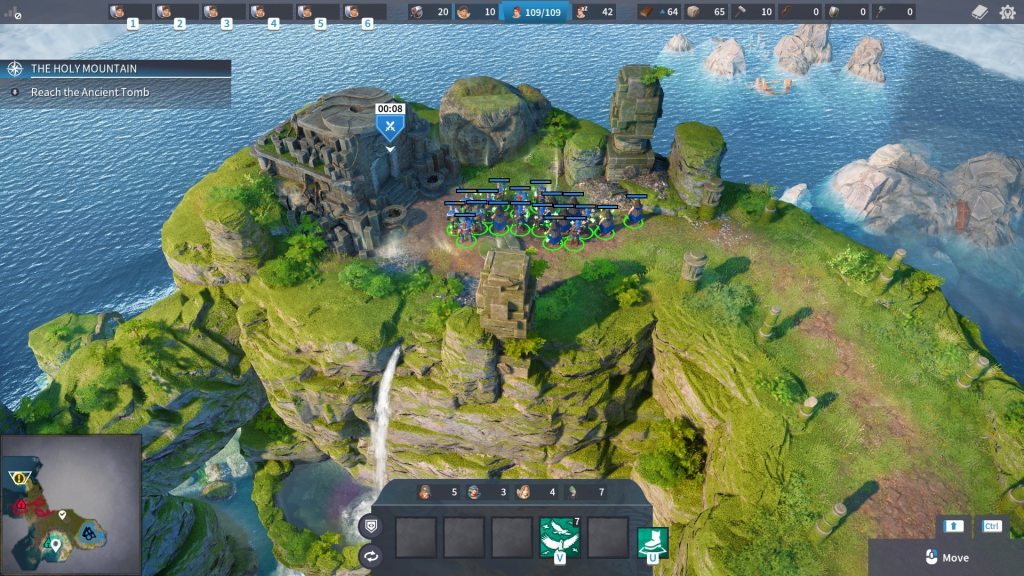
Victory is never easy, by any stretch, but it is fairly simple: gather resources, build your army, and go forth on the battlefield. Victory is earned, through the establishment of your township and your ability to best exploit natural resources, but it can feel deflating after travelling such a long road.
This impact is lessened somewhat by the game’s main campaign mode, which features a loose story guided by goals that give shape to the action. In this adventure, you play as each of the game’s three factions, and take on a variety of quests, with gentle goalposts guiding you through a tale of deadly battles and brewing war. Having a story to follow makes the action much snappier, and lends a sense of purpose that justifies the game’s busywork.
Strangely though, this doesn’t seem to be the main focus of the game. Rather, Skirmishes are – despite how easily this gameplay mode devolves to a frustrating sameness. Compounding this baffling focus is the inclusion of microtransactions in the game. Keen players can spend real-life money on items for The Settlers: New Allies – but these are purely cosmetic, and it’s hard to see why they’ve been implemented at all.
You can buy items with the game’s ‘Credit’ currency, but they offer no gameplay advantages. You can also purchase ‘Boosts’ – and these allow you to gain more Shards, which can be used to refresh weekly and community challenges in the game’s Skirmish – Hardcore mode, which offers a rotating array of mini-quests.
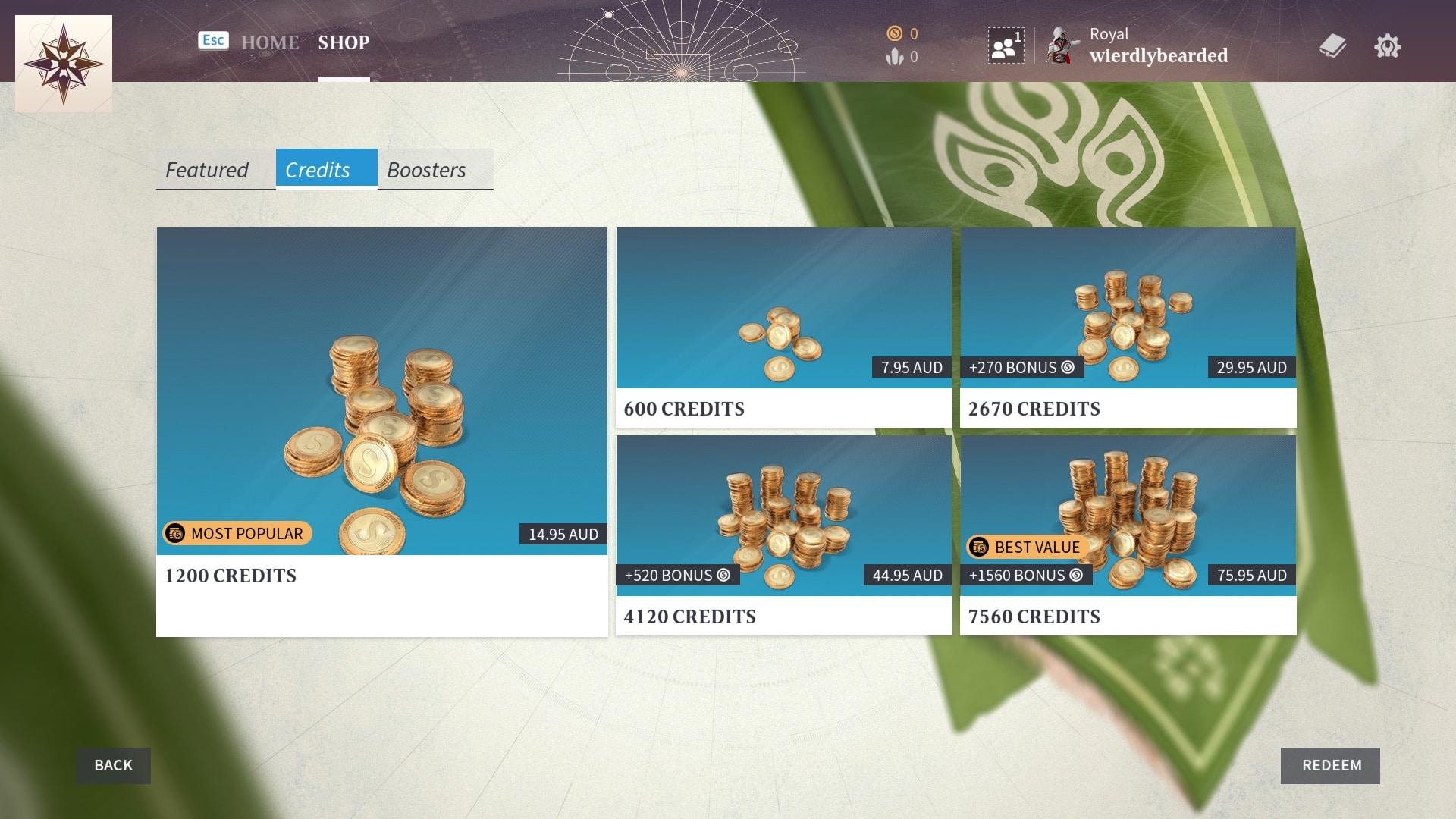
Given the game’s focus on single and multiplayer adventures, and that these cosmetic items do not actively benefit gameplay in any way, it’s hard not to feel these microtransactions are tacked on for no reason.
Not all games need to include live service elements – and The Settlers: New Allies feels like a good example of why. If a larger focus had been on the New Allies campaign, which allows players a real sense of power and exploration through gorgeous lands, the entire game would have been a far more powerful experience. As it stands, it feels oddly truncated – it’s a game that succeeds only on the inherent fun of exploration and discovery.
The Settlers: New Allies feels confused by its own identity. Is it a live service game? Is it a homage to the great RTS games of the past? Is it The Settlers, or a lesser Age of Empires? The answers seem to dance away the longer you play, and the further your settlements grow. While it houses a gorgeous world that actively encourages you to keep exploring, placing roads, and looking after your flock, a lack of depth and identity makes New Allies feel like a muddled experiment.
3 stars: ★★★
The Settlers: New Allies
Platform(s): PC
Developer: Ubisoft Düsseldorf
Publisher: Ubisoft
Release Date: 17 February 2023
The PC (Ubisoft Connect) version of The Settlers: New Allies was provided and played for the purposes of this review.
